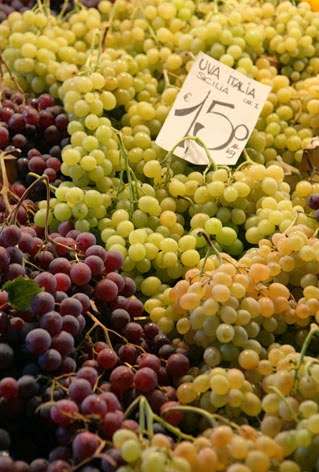
 Trinidad Culture
Trinidad Culture
In speaking with one of my neighbors who is from
Trinidad she defines her culture and diversity as being very unique. Th culture in Trinidad is heavily based on ethnicity, religion, and history. Trinidad has a number of cultural traditions that have been preserved and cross-pollinated by generations of migrants from all over the world, all in one small island. Trinidad is vibrant and very creative. The music stems from classical and fold of Europe, Africa and India, combining them in original ways or adding a creole touch to create new forms that are distinctly Trinidadian. The culture of Trinidad is focused on music and carnival.
The music is calypso, soca and steel-pan. Their style of dress is very colorful
and the official language is English even though some speak Kweyol. From work to school and from
entertainment to family, there is no single way of life in Trinidad. Like the
culture, the way of life is diverse and quite individual.
Some of the
foods inn Trinidad are plantains, pineapples, sweet potatoes, maize (corn),
cassava (yucca), mangoes, papaya, bananas, coconuts, beans, and numerous other
foods. As far as their religion is concerned some in Trinidad are Roman
Catholic, some Protestant, and others Hindi, Muslim and other Christian groups.
As a result of being captured by the British slave trade brought many Africans to work on the island's
plantations. When slavery was abolished in 1834, the Portuguese laborers from
the island of Madeira began arriving. As a result cultural diversity was
broadened on when the laborers were brought from India to work on the
plantations this brought about many religious customs.
Vietnamese Culture
I had the opportunity to interview the young lady from the nail salon I deal with. She is from Vietnam. In Vietnam modesty and humility are emphasized in the culture of the Vietnamese and deeply ingrained into their natural behavior. In the Vietnamese culture, bragging is often criticized and avoided. The Vietnamese culture often declines to accept praise by humbly claiming that he/she does not warrant such esteem. They do not demonstrate their knowledge, skills, or possessions without being asked to do so. Many of the Vietnamese women never sip alcohol and shy away from alcoholic beverages when offered to them. Vietnamese women who drinking are despised in their society.
Many customs are rooted in both the Confucian respect for education, family and elders, and the Taoist desire to avoid conflict. Vietnamese tend to be very polite and guarded. The family structure in Vietnam is an extended one, unlike the typical family in the United States, which normally consists of the father, mother, and unmarried children. Their families are composed of the parents, all children, and their in-laws, the grandparents, the great-grandparents, and also in some cases, uncle, aunts and their spouses, cousins, grandchildren, great-grandchildren, and all in-laws.
The living arrangements for the family is a house which may not accommodate everybody. The availability of living space determines the size of the family living together. But typically, one finds grandparents, father, mother, children, and grandchildren living under the same roof. Although not all members of the extended family are housed together, they tend to cluster around a certain area such as a village, small town, or places of easy access in large cities.
Vietnam's official language, is a tonal language that can be compared to Cambodia's official language, Khmer. There are other languages spoken as well such as Chinese, Khmer, Cham and other languages. Vietnamese avoid public displays of affection with a member of the opposite sex, they don’t stand with their hands on their hips, and they don’t cross arms on your chest, but they pass items with both hands. Rice is the dietary staple which most people eat three meals a day.
Vietnamese often accompany these main dishes with leafy vegetables and small bowls of salty sauces in which they dip their food. Popular dishes include sautéed vegetables, tofu, and a seafood-based broth with vegetables called canh, and a variety of pork, fish, or meat dishes. The Mahayana tradition of the Buddhism religion is dominant in Vietnam.
Italian Culture
The third person I interviewed was my boss who is Italian. Family is very important for Italians. The family is the center of the social structure and provides a stabilizing influence for its members. Italians are famous for their art, culture, food, wine, lifestyle, theater, music, design and of course style. Clothing in Italy is also very important and Italians will judge each other on clothing, shoes and accessories often within seconds of meeting one another. Clothing is often used to judge social status, education level and your family’s background. In terms of religion, Italians are predominantly Christian and belong to the Roman Catholic Church. Italian food is an important part of Italian life and includes pasta, salami, pizza and ice cream, olives, pesto and Sicilian Caponata as well as fresh fish, wine and meat. Italy is a land that is rich in culture, history and beauty.
My thinking about other people’s definitions of culture and diversity has influenced my own thinking about these topics in that culture and diversity needs to be accepted, valued and respected. In addition there is a great deal I can learn from different cultures. Since I like to cook I have some new recipes from the three individuals I spoke with. I cooked Lasagna Italian style and I must say it is better than my recipe. This just gives you an idea of how much you can learn from other cultures an how important diversity is.
References:
Gonzalez-Mena, J. (2008). Diversity in Early Care and Education (5th ed., pp. 8–13). Boston, MA: McGraw Hill.
Ngo, B. (2008). Beyond "culture clash": Understanding of immigrant experiences. Theory into Practice, 47(1), 4–11.









No comments:
Post a Comment